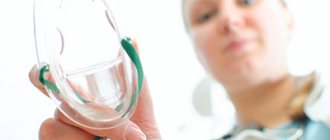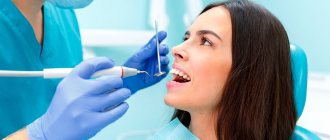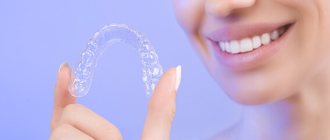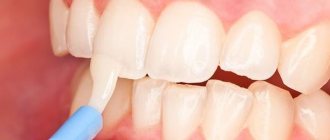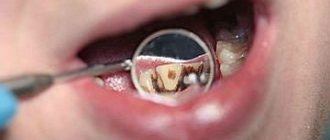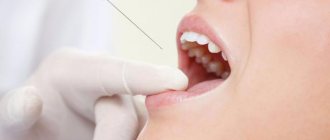From this article you will learn:
- how wisdom teeth are removed - photos and videos,
- how painful it is, what complications there are,
- price for wisdom tooth removal in Moscow.
The article was written by a dental surgeon with more than 19 years of experience.
Removing a wisdom tooth in dentistry - in half of the cases, is a complex surgical operation, which is associated with the difficulty of extracting the tooth from the dental alveoli (for example, due to severely curved roots or abnormal position in the jaw). Of all the human teeth, it is the eruption of wisdom teeth that causes patients the most discomfort, which usually happens when there is not enough space in the dentition for their eruption. And in this case, their removal also helps prevent crowding of the front teeth.
The times when dental surgeons hollowed out wisdom teeth using a surgical chisel and hammer are long gone. And even more so, none of the dentists use such a weak anesthetic as novocaine for pain relief. Currently, if a wisdom tooth is in such a position that it cannot be removed entirely from the jaw (without causing significant injury to the surrounding tissues), the doctor uses a special water-cooled drill. This allows you to separate the tooth into parts, quickly removing the roots individually.
Removal of the eighth tooth (wisdom tooth) –
The decision to remove already erupted wisdom teeth is made based on the possibility and necessity of using them for prosthetics in the future. It is very easy to remove a wisdom tooth, but effectively restoring the end defects of the dentition (if you do not have 6-7-8 teeth) can only be done with dental implantation. Therefore, sometimes even a severely damaged eighth tooth is worth restoring in order to later use it as a support for a bridge or to improve the fixation of removable dentures.
If we are talking about removing wisdom teeth that have not yet erupted (or partially erupted), then in adolescents it is optimal for the orthodontist to make the decision. The rudiments of the eighth teeth are formed in children aged 4-5 years, while the formation of the crown part ends at approximately 12 years, and the complete formation of roots - only at 24 years. If necessary, a teenager can have his unerupted eighth teeth removed, i.e. with not yet fully formed roots.
Is it painful to remove a wisdom tooth?
The most common question we hear from patients is whether it hurts to remove a wisdom tooth. Correctly administered anesthesia by a doctor eliminates pain during the removal process (of course, if you do not abuse analgesics, as well as alcohol and drugs). However, in the comments to this article you can read that the reviews of a small part of patients about wisdom tooth removal say that they experience severe pain and that “never again in their life.” And as an experienced dental surgeon, I will comment on this in detail.
- Pain during tooth extraction – this most often happens when a wisdom tooth is removed from the lower jaw. The fact is that in this case, so-called “mandibular” (torusal) anesthesia is administered. This type of pain relief is quite complicated, because... the tip of the needle should be located strictly at a certain point - approximately in the middle of the inner surface of the lower jaw branch. This is where the nerve that innervates the teeth on this side of the lower jaw passes. Removal will be painful when the doctor is not very experienced or hastened.
Thorusal anesthesia (technique) –In this case, the following will indicate a well-placed anesthesia: half of the lower lip on this side, as well as the tip of the tongue, should become very numb. Numbness occurs in about 5-10 minutes, after which the doctor usually asks you whether your lip and tongue are numb. If the numbness is weak, it is better to ask the doctor to give another injection of anesthetic. It is better to use drugs based on articaine as anesthetics (for example, Ultracaine containing vasoconstrictors). If you were given regular lidocaine without vasoconstrictors, the effectiveness of anesthesia will be lower.
But removing a wisdom tooth in the upper jaw does not require complex anesthesia techniques. In the upper jaw, the bone is quite soft and porous, so the anesthetic easily penetrates through the bone tissue. The injection is made into the gum - approximately in the projection of the roots of the upper wisdom tooth. After administration of the anesthetic, pain relief occurs within just 5 minutes and usually lasts from 15 to 45 minutes (depending on the choice of anesthetic). The usual symptoms you should experience are numbness in the cheek and part of the roof of your mouth.
- Pain after tooth extraction – when patients complain of pain associated with the removal of wisdom teeth, in 90% of cases this is pain that occurs after the removal. In this case, the reason is severe tissue trauma during a complex extraction, or as a result of the development of inflammation of the socket of the extracted tooth. Unfortunately, sometimes a quick 5-minute procedure for removing a wisdom tooth often ends in a week of nightmare, which occurs due to alveolitis of the socket of the extracted tooth. In some cases, it is the patients themselves who are to blame for not following the doctor’s recommendations after removal.
To summarize, the removal process itself is more scary than painful. In this case, the pain begins after removal, and it can be associated either with the excessive trauma of the removal (i.e., the doctor did not perform the operation quite competently), or with the fact that the patient could rinse out a blood clot from the wound. Well, we also forgot to say that there is another option for removing a wisdom tooth - this is removal under general anesthesia (not too pleasant, but not scary).
Treatment of several teeth at once
Fortunately, modern dentistry has made great strides forward. Today, many painless treatment options are offered, and the rehabilitation period is easier and faster. In their work, specialists use the latest equipment and the safest tools; the risk of allergic reactions to the drugs used is minimal.
Even with minor interventions, the person is given safe painkillers, and if necessary, general anesthesia or sedation can be given. Previously, treatment of several teeth at once was excluded precisely because of the lack of a reliable anesthetic with a long-lasting effect, but today this has become possible.
Several units usually fall into the anesthesia zone at once. If caries has affected adjacent teeth, the doctor can restore them at one time. Even if the effect of the substance decreases by the time it is time to install the filling, there is nothing to worry about. Filling is a much less painful procedure compared to removing caries-affected tissue.
How do dental surgeons remove wisdom teeth?
Typically, removing an upper wisdom tooth is easier than removing a lower wisdom tooth. This is due to the fact that the bone tissue of the upper jaw is softer and more porous, and therefore it is much more difficult to break off one of the roots (when removing a tooth from the socket). However, on the other hand, if the doctor does break off the top of one of the roots, then removing it from the upper jaw will be much more difficult. The latter is due both to the lack of good visual access and to the fact that working with thin elevators necessary to extract the root apex from the socket is much more dangerous in soft bone.
The bone tissue of the lower jaw is much denser, and lower wisdom teeth almost always have massive and/or often curved roots. Therefore, the roots of the lower wisdom teeth generally break off more often than the upper ones. But the doctor always has the opportunity to reduce the risk of such an outcome by taking an x-ray that will show us the shape and position of the roots in the jaw. If there is a risk of breaking off the root during tooth extraction, a good doctor will first saw it into pieces, after which he will separately remove the roots and parts of the crown. All this usually takes less than 15 minutes, but you come to understand this with experience.
But most often you can find a different picture, when the doctor uses all his might to loosen the tooth with forceps or tries to dislocate the tooth from the socket with an elevator, but one of the roots suddenly breaks off. Then the doctor begins to either pick at the wound for a long time with a thin elevator, or drill out the bone tissue (to get to the broken off tip of the root). In both cases, very significant trauma is caused to the jaw, which will lead to severe pain and inflammation of the wound in the postoperative period. Therefore, experience and understanding of the extraction strategy play a big role, and sometimes even a very complex tooth, on which one doctor can spend a whole hour, another may need only 5-10 minutes.
Simple and complex wisdom tooth removal –
Thus, removing the eighth tooth can be either simple or complex. In some cases, we can assume in advance that there will be a difficult removal. Here are a few options at a glance: 1) we need to remove a tooth that has not yet erupted above the mucous membrane, 2) on the x-ray we see curved roots, 3) the tooth has a strong slope towards the 7th tooth, resting against it with the crown in the cervical area, 4) the tooth has a horizontal position in the jaw, 5) the crown of the tooth is almost completely destroyed and there is no way to “catch” on it with instruments.
Variants of the position of the wisdom tooth in the jaw -
With similar options for the position of the wisdom tooth (as in the radiographs above), we plan a complex extraction in advance. But even removing such teeth with the right strategy may not be too difficult, taking only 15-20 minutes. Below we will describe in detail how simple wisdom tooth removal is carried out, and also show one of the options for complex removal.
Symptoms and signs of abnormal growth
It is extremely rare for eights to appear without any complications. This is due, first of all, to the fact that wisdom teeth grow in adulthood, when the jaw is already formed. Even with proper teething, discomfort may still be present for several weeks or months. If a wisdom tooth grows incorrectly or has an abnormal location, then certain symptoms indicate this.
Let's take a closer look at the types of pathologies and symptoms associated with the growth of wisdom teeth.
- Retention is a pathology in which the third molar is located under the mucous or bone tissue. The main symptoms are severe pain in the gums, as well as the development of an inflammatory process in the gum pocket.
- Dystopia or abnormal position of the tooth. It manifests itself as severe pain, affecting adjacent teeth, and the development of inflammation, including phlegmon or osteomyelitis.
The initial alarming symptoms that a patient may identify when a wisdom tooth grows are:
- Swelling in the cheek area.
- When swallowing, severe pain occurs, radiating to the throat or ear.
- Purulent or bloody discharge.
- Injury to the mucous membrane.
If you detect at least one of the above symptoms during the eruption of figure eights, you must seek the help of a dentist as soon as possible. The doctor will conduct an x-ray and determine whether the wisdom tooth is growing correctly.
Simple wisdom tooth removal -
In video 1 below you can see how the lower wisdom tooth is removed.
Please note that before loosening the tooth using forceps, the doctor used a special tool to separate the gum mucosa from the neck of the tooth. Thus, the entire removal process took only a few minutes, plus another 1-2 minutes will be required to apply 1-2 stitches. Video 2 shows how the removal of an upper wisdom tooth is performed. Please note that removal is carried out with a special tool (elevator), which looks like a large screwdriver. With the help of an elevator, the wisdom tooth is dislocated from the socket, and forceps are used only to remove the moving tooth from the socket (24stoma.ru).
Important points that will allow you to avoid complications...
- When taking your medical history, the most important thing you should tell your doctor about is: allergies to medications, diabetes, bronchial asthma, problems with blood pressure, bleeding disorders, whether you are taking anticoagulants.
If you took Aspirin within 1 week before, then this should also be mentioned, because it thins the blood and thereby contributes to the development of bleeding and the formation of hematomas. It is very important for women to inform the doctor about their critical days. The fact is that during menstruation, the number of platelets in the blood decreases by 30-50%, and stopping bleeding depends on them. If this is not taken into account (and the doctor does not suture the wound), you can get severe bleeding, and not necessarily right away in the doctor’s chair, but when you come home.
- After removing the tooth from the socket, simple removal does not involve making incisions in the gums or drilling the tooth out of the bone tissue. The tooth is rocked with forceps or an elevator and removed. After extraction, a good doctor will always put the drug Alvogel into the socket of the extracted tooth, which will reduce the risk of developing alveolitis (inflammation of the socket of the extracted tooth). This common drug is available in every clinic.
- Stitching - after simple removal, doctors rarely sutured the wound.
But a good doctor will always put stitches to bring the edges of the wound (mucous membrane) closer together, even after a simple removal. Studies have shown that this step almost completely eliminates the risk of bleeding or clot falling out of the wound, and the wound will hurt significantly less after removal. But the most important thing is that the risk of developing alveolitis is reduced by 70-90%. Therefore, I advise you - even before removal, ask the doctor to put 1-2 stitches on you, even if you have to pay extra for it. Believe me, in the end, thanks to this, you will save yourself a lot of nerves and money on medications and repeated visits to the doctor (if bleeding or inflammation of the hole develops). For assignments after deletion, see the end of the article.
How complex removal can sometimes be made simple -
We want to show you another video where an impacted tooth that has not yet fully erupted is removed. Despite the fact that the doctor makes an incision in the mucous membrane and saws out the bone tissue around the tooth with a drill, removal takes only 5 minutes. Please note that in this case, the tooth is not removed using forceps, but the tooth is again dislocated from the socket using an elevator. This video clearly demonstrates that a good doctor is often able to turn a complex removal into a simple one.
What to do with a bothersome wisdom tooth at home
The most important thing is not to cause further harm to yourself before visiting the dentist. It is extremely important to avoid overheating the area of concern. Heat can accelerate the onset of the inflammatory process. Therefore, you should not apply warm compresses or take a hot bath.
What can you do to relieve pain when wisdom teeth erupt:
- follow a gentle diet (do not eat very hard, hot or cold foods);
- after eating, rinse your mouth;
- use local anesthesia, such as gels used during teething in children;
- In case of severe pain, you can take painkillers.
But the most important thing is not to delay your visit to a specialist! Only he will be able to determine the seriousness of the problem and help avoid possible complications.
Complex wisdom tooth removal –
In cases where the tooth has not yet erupted, or it has numerous branched and curved roots, or when the crown of the tooth is almost completely destroyed (there is nothing to grab with forceps), or the tooth has a strong slope or occupies a horizontal position - all this suggests that removal can be difficult. And here, of course, it is advisable to have an x-ray.
Complex removal always involves a number of steps. In this case, the doctor will make an incision in the gum, or saw the crown of the tooth into 2 parts (in order to then extract the roots separately). Complex removal may involve drilling out the bone tissue to facilitate loosening and removal of the tooth from the socket, or to get to the top of one of the roots broken off in the wound. Accordingly, at the end we will definitely need to apply several stitches.
Complex wisdom tooth removal (Fig. 4-8) –
Description of the operation - after anesthesia, an incision is made in the mucous membrane of the gum, and the edges of the mucous membrane are moved back to expose the crown of the tooth and the bone tissue around it. Further, sometimes we can immediately dislocate a tooth with an elevator, but sometimes we first have to cut it into several parts with a drill, or first drill out the bone tissue around the tooth with a drill. Next, using an elevator, we loosen the tooth and remove it from the socket.
Next, the wound is washed with antiseptics and the anti-inflammatory medicine Alvogel is placed in the hole. The fact that it was placed in your hole is always indicated by a specific iodine smell and taste. This medicine dissolves on its own after 7 days, i.e. you don’t have to remove it from the hole. After this, the wound is sutured. The suture material may be self-absorbing (within 7-10 days), or you will have to return to the clinic to remove the sutures.
Complex removal of the lower wisdom tooth (video) –
In video 1 below, you can see that the doctor first completely saws off the crown of the tooth with a drill, and only after that removes the roots of the tooth. In this case, this is necessary for the reason that the wisdom tooth is located at a strong angle to the 7th tooth in front, resting against it in the cervical area (this will not allow the 8th tooth to be removed from the socket without breaking its roots). In video 2, the doctor saws the crown of the tooth into two parts, after which he extracts the roots separately.
Important: it should be noted that after the removal of wisdom teeth, inflammation of the socket (alveolitis) develops in 25-30% of the sockets of the extracted teeth. After the removal of teeth of any other location, such inflammation develops only in 2-5% of cases. Therefore, it is very important to provide antiseptic treatment of the wound after a complex removal, place an alvogel in the hole, apply sutures, and also make sure that a blood clot forms in the hole.
Features of tooth extraction in the upper jaw
The structure of the upper and lower jaws is significantly different. They also vary in density and location. Therefore, the method of tooth extraction will differ:
- on the upper jaw the operation is faster;
- the recovery period is shorter;
- pain relief is simpler and more effective.
Complications during tooth extraction in the upper jaw occur less frequently than in the lower jaw.
Anesthesia
The secret of high-quality pain relief is the correct delivery of the drug to the nerve. The choice of anesthesia method takes into account the patient’s age, his general condition, and the complexity of the tooth being removed.
Anesthesia of the upper jaw
The upper jaw is less dense than the lower jaw. It is covered with a cortical plate with many holes. Nerves and blood vessels pass through them. Pain relief is easier and faster than in the lower jaw
Sinus damage
Above the upper jaw is the nasal sinus, also known as the maxillary sinus. Its bottom may be close to the root of the tooth being removed. Then, during removal, sinus perforation may occur. This complication is typical for surgery on molars. This pattern is explained by the fact that the jaw in the area of the incisors is longer, and the nasal cavity is further away relative to them.
The main sign of sinus perforation is the escape of air, food and fluid through the nose. There is foam in the hole. Hospitalization in a hospital may be indicated for treatment.
Entry of part of the root into the sinus
Due to perforation of the sinus, part of the root can get inside it. This is caused by thinning of the bone plate or errors during the removal operation.
The symptoms when part of the root gets into the sinus are the same as when perforation occurs: air and contents of the oral cavity escape through the nose. But at the same time there is pain and increased body temperature. Treatment requires hospitalization.
How much does it cost to remove a wisdom tooth: price in Moscow
How much does it cost to remove a wisdom tooth: the price in Moscow will depend on the complexity of the removal, as well as on the pricing policy of the dental clinic. For example, the cost of wisdom tooth removal can differ significantly in public clinics and private economy class clinics - from the price in clinics of medium and high price categories.
In addition, in some clinics there may be a gradation of wisdom tooth removal only into simple and complex, while in others - into simple, medium complexity and complex. After analyzing the prices, we divided them into economy class clinics and clinics in the middle and high price segment.
Wisdom tooth removal: price in economy class clinics in Moscow
- A simple removal of a wisdom tooth costs from 1,500 rubles, the cost already includes anesthesia, but if you need to put 1-2 stitches, you will have to pay another + 500 rubles.
- Removal of average complexity costs about 3,000 rubles, this price includes anesthesia and suturing.
- Complex wisdom tooth removal - from 5,000 rubles, this includes the removal of impacted and dystopic wisdom teeth. The price is already “all inclusive”, including anesthesia, repeat examinations and suture removal.
The price of wisdom tooth removal in clinics of the middle and upper price segment is –
- Simple removal – from 3500 rubles.
- Complex removal costs about 10,000 rubles, this price is also “all inclusive”, including repeated examinations.
Causes of abnormal growth of wisdom teeth
Medial or distal figure eight dystopia develops for various reasons. It is impossible to determine the specific type of anomaly that led to this position of the tooth, but the most common reasons for horizontal growth of molars are:
- Lack of baby teeth. “Eights” are the only teeth that do not have milk “twins.” They erupt around the age of 17-18, although they can “sleep” until the 40th birthday. Thus, they do not have natural predecessors who would pave the way for them and stake out a place for them. As a result, the development of the dental unit occurs uncontrollably, which causes the horizontal position;
- Malocclusion. Childhood bite problems often lead to misalignment of the adult dentition, which leaves too much space for the outermost molar. Without natural support, the tooth begins to “fall” forward or backward, because the jaw bones, like the entire body, are constantly growing and developing up to 25 years. If bite problems are not resolved in childhood, then the likelihood of molar dystopia increases to 75%;
- Jaw injuries. A fracture, bruise and even severe inflammation in the tissues of the jaw can cause a change in the natural position of the teeth. This rule also applies to the last molars in the row. Unfortunately, it is impossible to determine and correct abnormal tooth growth as a result of injury; all that remains is to wait for the moment when it begins to erupt and remove it surgically;
- Genetic abnormalities. Most problems with teeth begin in the womb at the stage of formation of their rudiments. A mother who suffered an infectious disease during pregnancy does not herself know that she caused the crooked growth of her child’s teeth. You should also not forget about heredity - if the dad has had bad teeth since childhood, it will be extremely surprising if the child’s teeth suddenly become super strong, even and healthy.
Recommendations after wisdom tooth removal –
After a simple extraction, it is enough to follow the standard recommendations after tooth extraction. But what to do after the removal of a wisdom tooth, if the removal was difficult or was carried out against the background of purulent inflammation. To the standard recommendations in the link above, we recommend adding the following -
NSAID-based analgesics - without waiting for the anesthesia to wear off, take an NSAID-based analgesic (for example, ibuprofen). The advantage of these drugs is that in addition to pain relief, they also have an anti-inflammatory effect. Be sure to drink on day 1, then as needed. And remember that after removal you cannot take aspirin and its derivatives.
- Antihistamines - they are also called antiallergic. We recommend taking it (preferably Suprastin) once a day before bedtime in the first 3 days after a complex removal. The advantage of these products is that they help reduce the swelling of soft tissues, which will certainly develop after a complex removal.
- Antibiotics – Antibiotics after wisdom tooth removal should only be prescribed by a dental surgeon and not taken on your own. Most often, dental surgeons are accustomed to prescribing Lincomycin 0.25 capsules (2 capsules 3 times a day, for 5 days). This is an inexpensive Russian drug, quite effective, but it has a strong effect on the intestinal microflora, killing all living things.
Another popular antibiotic in dentistry is Amoxiclav. For adults, it is necessary to use Amoxiclav tablets containing 500 mg of amoxicillin and 125 mg of clavulanic acid - 2 times a day. However, if you have had stomach upsets (diarrhea) after taking antibiotics, then it is better to opt for the antibiotic Unidox-solutab 100 mg 2 times a day for 5-6 days.We recommend the latter option. And try never to take Russian antibiotics in your life if possible, if you do not want to develop pseudomembranous colitis. It would be better then to give preference to inexpensive Indian antibiotics.
Can third molars be treated?
Wisdom teeth, like any other teeth, can be treated. But only if they erupt correctly, do not threaten the health and position of the rest of the dentition, and there is confidence that the treatment will be successful. If the specified conditions are met, it makes sense to preserve the “eight” for the following indications:
- If the sixth and seventh teeth are sick or severely damaged and must be removed, in this case the wisdom tooth is left as “the best of the worst” in order to provide the patient with at least some conditions for chewing, and the doctor - the basis for future prosthetics.
- If the six and seven have already been removed and it is necessary to preserve the abutment tooth for installation of prosthetic structures.
- In the presence of an antagonist tooth, completely healthy and subject to preservation.
In case of curved roots that complicate endodontic intervention, severe tissue destruction, dystopia or retention, no competent dentist will undertake to treat the “eights” - he will definitely recommend removal.
Wisdom tooth removal: consequences, complications
As we have already said: there are much fewer complications if, even after a simple removal, the doctor always sutures the wound. Below we will also list all the main complications after wisdom tooth removal, which (we must admit) in most cases are the cause of the following doctor errors -
- Wrong strategy - inexperienced or lazy doctors try, if possible, to remove a wisdom tooth only with forceps and an elevator, sometimes torturing the patient for 1-2 hours, instead of immediately making an incision and sawing out a small amount of bone, or sawing the tooth crown into several parts, removing this is each root separately.
- Poor instrumentation - if you see that the doctor is using a chisel, then it is almost natural that you will then have complications (inflammation of the socket, pain in the temporomandibular joint, numbness of the lower lip due to nerve injury). Gouging out is simply unacceptable. Sawing of roots and bone should only be done with a water-cooled drill (the absence of water cooling in 100% of cases leads to overheating of the bone and the development of inflammation of the socket).
- Incorrect prescriptions after extraction - after any complex extraction, especially one carried out with sawing out the bone, sawing the crown of the tooth, as well as even after a simple extraction, but if the tooth was removed due to inflammation, it is necessary to prescribe antibiotics. Some doctors do not do this, resulting in inflammation of the extracted tooth socket after 1-2 days.
The most common complications are
- Bleeding after removal - sometimes bleeding does not develop in the doctor’s chair, but several hours after removal or even at night. There are special methods for stopping bleeding at home that help most patients.
- If numbness of the lower lip appears, this indicates an injury to the mandibular nerve, which passes near the tips of the roots of the lower teeth. In this case, you need to urgently contact a dentist and neurologist.
- Inflammation of the socket of an extracted tooth is the most common complication, which is commonly called alveolitis. Symptoms are aching pain, which can be moderate or moderate in severity. If after removal your pain/swelling does not decrease, but only increases, if you experience pain when cold or hot water gets on the wound, if there is an unpleasant odor from the socket, if there is no clot in the socket and food gets stuffed there - all this is typical for alveolitis .
Vaccination against covid-19 and dental treatment: are there any contraindications?
In 2021, the coronavirus pandemic still remains one of the main problems of humanity. New strains appear, people continue to get sick. The state is taking measures to protect citizens. One of these measures was universal vaccination against Covid-19.
The effect of coronavirus on the systems and organs of the human body has not yet been fully studied. Scientists and doctors, of course, put forward various theories, but confirming them will require years of study.
It's the same with the vaccine.
Our patients ask a lot of questions related to dental treatment during a pandemic: is it possible to come to the clinic with mild symptoms of ARVI, is it possible to start implantation after vaccination against covid-19, how will coronavirus affect rehabilitation after dental operations, and much more.
In this article, with the help of an experienced implant surgeon at our clinic, Alexey Pavlovich Nesterenko, we will try to answer several popular questions. We warn you: the conclusions are made on the basis of the general theory of medicine and the annual practice of our specialists. The doctor should make a decision about starting treatment specifically in your case after an in-person consultation and diagnosis.
→ Is it possible to come to the clinic with minor symptoms of ARVI?
No, even with minimal discomfort, we kindly ask you to postpone your appointment until the diagnosis is clarified. New strains of coronavirus can “masquerade” as a common cold. Be responsible and take care of those around you who may suffer a severe form of the disease.
→ Do I need a QR code or PCR to visit the clinic?
At the moment there are no such requirements, follow the information on our website.
→ Is it safe to visit the clinic now, or is it better to postpone treatment for now?
We comply with all the requirements of the Ministry of Health for patient safety in the clinic: temperature control, questionnaires about contact with sick people, ultraviolet disinfection lamps, disposable masks and gloves for each patient, strict control of doctors and medical staff. All our employees have undergone mandatory vaccination with Sputnik V. We care about the protection of patients and ask you to also be careful and vigilant.
→ Is it possible to have implantation if I have had coronavirus?
Can. But given the specifics of the disease and its effect on the body in moderate and severe cases, before starting dental treatment, especially for patients with chronic diseases (diabetes mellitus, oncology, pathologies of the heart and blood vessels), it is recommended to obtain opinions from related specialists.
→ Is it possible to treat teeth during vaccination?
before vaccination
It is advisable to postpone planned surgical operations (sinus lifting, bone grafting, implantation); it is also recommended not to rush into treatment after the vaccine and also wait about 2 weeks. This is due to the fact that the body receives an immune load during vaccination; during this period it is advisable not to give additional stress in the form of surgical interventions.
The exception, of course, is acute toothache and unscheduled procedures for emergency indications.
→ Will treatment for coronavirus affect the healing of implants?
In general, no. There was no trend towards implant rejection in patients who had recovered from coronavirus during the year of observation.
There is one caveat - it is not advisable to start implantation immediately after recovery if you took anticoagulants (blood thinning drugs) during the treatment period. This may affect the healing of structures in soft tissues, and there is a risk of bleeding.
→ Is it possible to remove a tooth before/after vaccination or post-COVID? What to do if you need to urgently remove a tooth and get a vaccination at the same time?
All planned removals are carried out either a week before the 1st component of the vaccine, or 2 weeks after the introduction of the 2nd component. This applies to any planned surgical intervention, be it removal, bone grafting or implantation. If it is necessary to remove a tooth due to acute pain, so as not to cause further complications, an exception is made - the causative tooth is removed at any stage of vaccination (during the break between two components, or a few days before and after).
→ Is it possible to obtain a medical exemption from vaccination if, for example, a wisdom tooth is removed or dental implantation surgery is performed?
A dental clinic cannot issue medical certificates for vaccination. But she can provide a document proving that a particular intervention has been carried out, for example, tooth extraction or a planned surgical operation. With these documents, you need to contact your general practitioner before administering the first component of the COVID-19 vaccine. If the therapist deems it necessary, he will give you a medical discharge after the surgical intervention.
→ Does treatment with anesthesia affect vaccination, can it be done after using anesthetics? Can anesthesia be given on the same day as a COVID-19 vaccine?
There is no evidence in medical practice yet that proves that anesthesia adversely affects vaccination. Regarding the administration of anesthesia immediately after vaccination, it is advisable to refrain from using anesthetics for at least a couple of days. If we are talking about acute pain, then the use of anesthesia is justified, and the surgeon or therapist uses it, while carefully monitoring the patient’s condition.
→ Is it possible to get vaccinated against coronavirus if you have periodontitis?
Yes, you can, periodontitis is not a contraindication to vaccination.
→ If your teeth hurt, can you get vaccinated against Covid?
If your teeth hurt, you need to go to a dental clinic to eliminate the cause of the pain. The dentist will issue a document stating that a certain intervention was performed (treatment, depulpation, removal, etc.), and with this document you can contact the therapist before the first component of the vaccine. If the therapist considers it necessary to give medical withdrawal for a certain time, then, accordingly, it is advisable to postpone the vaccination.
If you have any questions about this topic, please contact us by phone numbers listed on the website or by mail
Expert of the article Alexey Pavlovich Nesterenko Implant surgeon
Experience more than 10 years
What do patient reviews depend on?
Positive reviews will primarily depend on the experience and professionalism of the dental surgeon. It is better to find an experienced doctor rather than a young doctor straight out of medical school. Ideally, the doctor has experience in maxillofacial surgery and/or implantology. Read patient reviews about wisdom teeth removal in the comments to this article. We hope that our article on the topic: Wisdom tooth removal consequences photo - was useful to you!
Sources:
1. Higher prof. the author’s education in surgical dentistry, 2. Based on personal experience as a dental surgeon, 3. National Library of Medicine (USA), 4. “Outpatient surgical dentistry” (Bezrukov V.), 5. “Qualified removal of third molars” (Asanami WITH.).
Features and difficulties during removal
Extraction of the upper wisdom tooth is complicated by its specific anatomical features.
“Eights” erupt late, when the dentition is already formed. Therefore, very often they are incorrectly located, grow together with the roots of neighboring teeth, grow towards the cheek or even horizontally. Each of these factors complicates the extraction process placed on top of the 8th tooth. But if we compare wisdom tooth removal from above and below, then in the first case the surgical procedure is much simpler. In the upper dentition, the bone is less dense and massive, there are much fewer blood vessels in the soft tissues and the risks of damage to the trigeminal nerve are lower. Therefore, the operation to remove the G8 is easier and safer.
Possible complications during the development of wisdom teeth dystopia
Third molars are extremely problematic teeth. If teething occurs with tolerable pain and the patient does not rush to the dentist, then the following complications are possible:
- Pericoronitis – inflammation of the gum mucosa;
- A follicular cyst is a “sac” of fluid pressing on the roots;
- Periostitis is inflammation and suppuration (abscess) of the periosteum.
The appearance of these complications will lead to longer, more painful and expensive treatment, so you should not put off going to the doctor if you feel that your wisdom tooth has begun to erupt.

